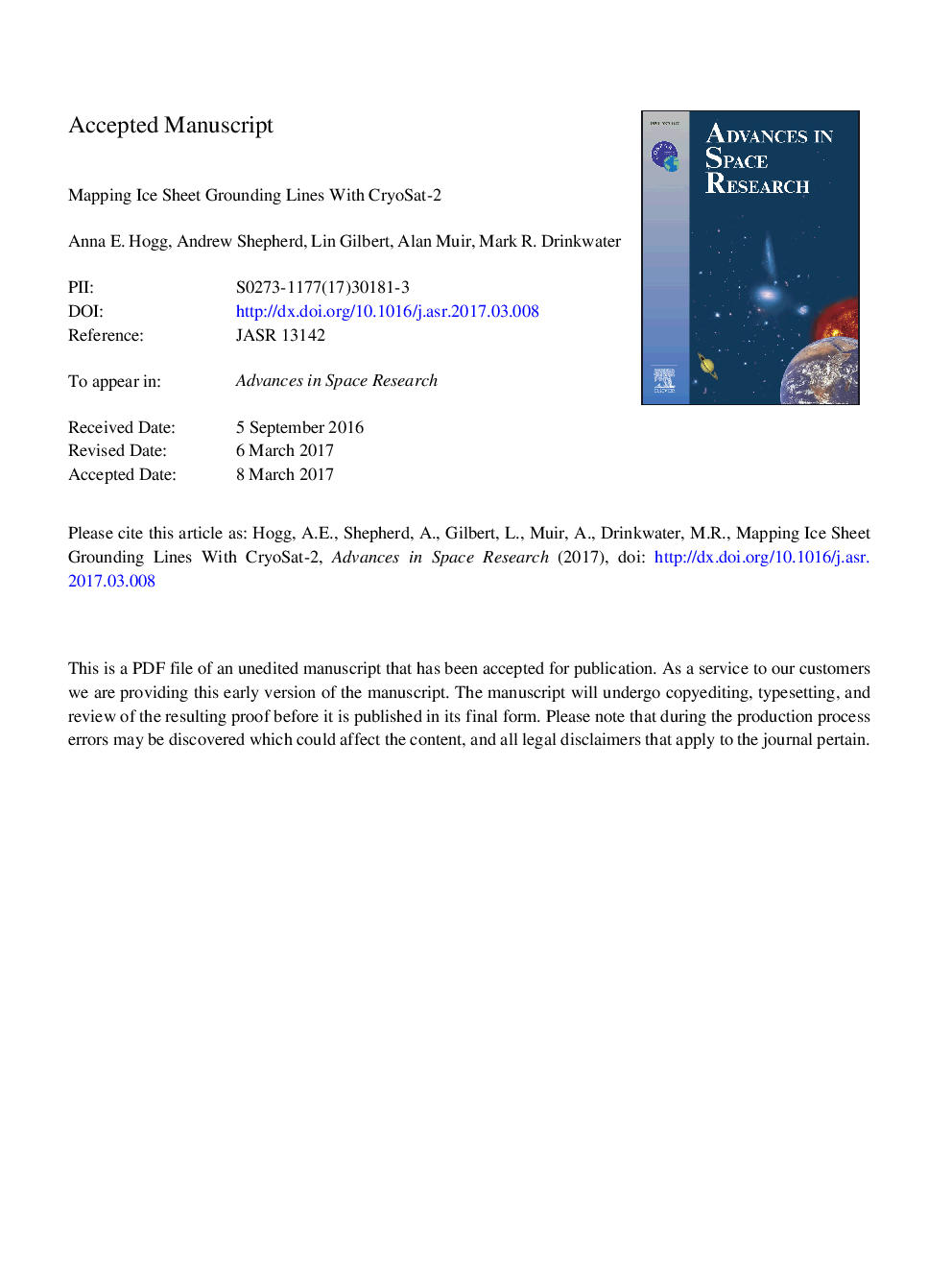| Article ID | Journal | Published Year | Pages | File Type |
|---|---|---|---|---|
| 8131585 | Advances in Space Research | 2018 | 28 Pages |
Abstract
The boundary between grounded and floating ice is an important glaciological parameter, because it delineates the lateral extent of an ice sheet and it marks the optimal location for computing ice discharge. We present a method for detecting the grounding line as the break in ice sheet surface slope, computed from CryoSat-2 elevation measurements using a plane-fitting solution. We apply this technique to map the break in surface slope in four topographically diverse sectors of Antarctica - Filchner-Ronne Ice Shelf, Ekström Ice Shelf, Amundsen Sea sector, and the Larsen-C Ice Shelf - using CryoSat-2 observations acquired between July 2010 and May 2014. An inter-comparison of the CryoSat-2 break in surface slope with independent measurements of the hinge line determined from quadruple-difference SAR interferometry (QDInSAR) shows good overall agreement between techniques, with a mean separation of 4.5Â km. In the Amundsen Sea sector, where in places over 35Â km of hinge line retreat has occurred since 1992, the CryoSat-2 break in surface slope coincides with the most recent hinge line position, recorded in 2011. The technique we have developed is automatic, is computationally-efficient, can be repeated given further data, and offers a complementary tool for monitoring changes in the lateral extent of grounded ice.
Related Topics
Physical Sciences and Engineering
Earth and Planetary Sciences
Space and Planetary Science
Authors
Anna E. Hogg, Andrew Shepherd, Lin Gilbert, Alan Muir, Mark R. Drinkwater,
